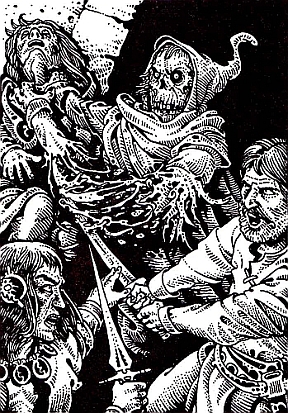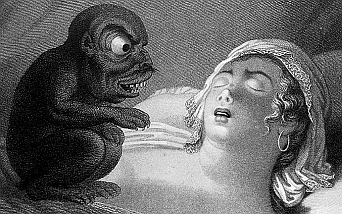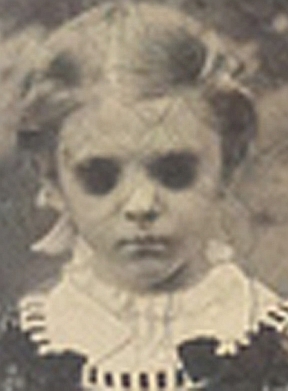
raffish: (adj.) unconventional and slightly disreputable, esp. in an attractive manner
Nota Bene: As promised, here’s an NPC for TSR’s original Top Secret from 1980. Back in the day, we played this, Marvel Super Heroes, and Gamma World more than D&D. I still fondly remember our long-running Top Secret campaign, wherein our agents quit working for the government and went freelance in the style of The A-Team. Ah, good times with friends who I’ve long since lost contact with, and two of whom have passed away. Requiescat in pace, Fred and Big Fred.
BEGIN MESSAGE
TO: All field operatives in the Middle East
BY AUTHORITY OF: Director of Administrations MR
PURPOSE: Dossier of Bradbury, John Alexander
MESSAGE: At the outbreak of the U.S. entry into World War II, Joshua Alexander Bradbury joined the National Guard and contacted Rep. John Sparkman of Alabama, who arranged a meeting with William “Wild Bill” Donovan. The two hit it off immediately, but Bradbury nonetheless was not recruited to Donovan’s Office of Strategic Services (OSS), and instead joined the Corps of Intelligence Police, which became the Counterintelligence Corps in January 1942. Bradbury was stationed in London. He reportedly gained the top-secret “Bigot” clearance and took part in discussions about Operation Overlord. After the conversion of the OSS into the Strategic Services Unit on 1 October 1945, Bradbury joined what would become part of the Central Intelligence Agency.
Among Bradbury’s first post-war postings was Damascus, Syria, starting in September 1947, thus beginning a long career in the Middle East. He played a role in supporting the March 1949 Syrian coup d’état, and was instrumental in arranging Operation Ajax, the 1953 technical coup d’état against the Prime Minister of Iran, Mohammed Mossadegh.[2]
Later in 1953, Bradbury returned to private life at the consulting firm Booz Allen Hamilton, but he remained a non-official cover operative for the CIA. He traveled to Cairo to meet Gamal Abdel Nasser, who had overthrown King Farouk and taken power in Egypt, advising Nasser on the development of the Mukhabarat and becoming Nasser’s closest Western advisor. In this role he offered U.S. economic development and technical military assistance.
In 1955, Bradbury officially returned to the CIA. During the Suez Crisis, the U.S. backed Egypt’s independence and control of the Suez Canal. The move is said to have been advocated by Bradbury with the goal of ending British control of the region’s oil resources, and forestalling the influence of the Soviet Union on regional governments by placing the U.S. behind their legitimate national interests. After the crisis, Nasser nevertheless moved closer to the USSR and accepted massive military technology and engineering assistance on the Aswan Dam. Bradbury worked to reverse this trend at the time, which included Bradbury’s involvement in schemes to assassinate Nassar.
In 1958, Syria merged with Egypt in the United Arab Republic and King Faisal II was deposed by Iraqi nationalists. Bradbury oversaw contacts with the Iraqi regime and with internal opponents, including Saddam Hussein and the Baath Party.
Shortly after these events, Bradbury faked his own death and went rogue. He currently works out of Beirut, where he owns several safehouses. From these locations, Bradbury sells his skills as an information broker. Bradbury is generally pro-Western, and even his former CIA bosses have had reason to contract with him for his services.

Bradbury has not been photographed in more than a decade. The photo to the right is one of the last known images of him before he went rogue. Presumably, Bradbury has retained his love of high fashion. Bradbury is dapper and charming, but this facade hides a core of cold steel. Approach with caution.
END MESSAGE
STOP
END PAGE
Primary Personal Traits
Physical Strength: 55
Charm: 90
Willpower: 80
Courage: 70
Knowledge: 95
Coordination: 60
Secondary Personal Traits
Offense: 65
Deception: 80
Evasion: 75
Deactivation: 78
Life Level: 14
Movement Value: 195
Tertiary Personal Traits
Hand-to-Hand Combat Value: 130
Surprise Value: 155
Languages: Arabic 65, English 90, French 80, Spanish 80
Areas of Knowledge: Architecture 75, Astronomy & Space Science 75, Biology & Biochemistry 65, Computer Science 105, Economics & Finance 90, Geography 85, Law 95, Military Science & Weaponry 75, Political Science & Ideology 90, Psychology 125
Tags: A to Z 2014, NPCs, Top Secret






